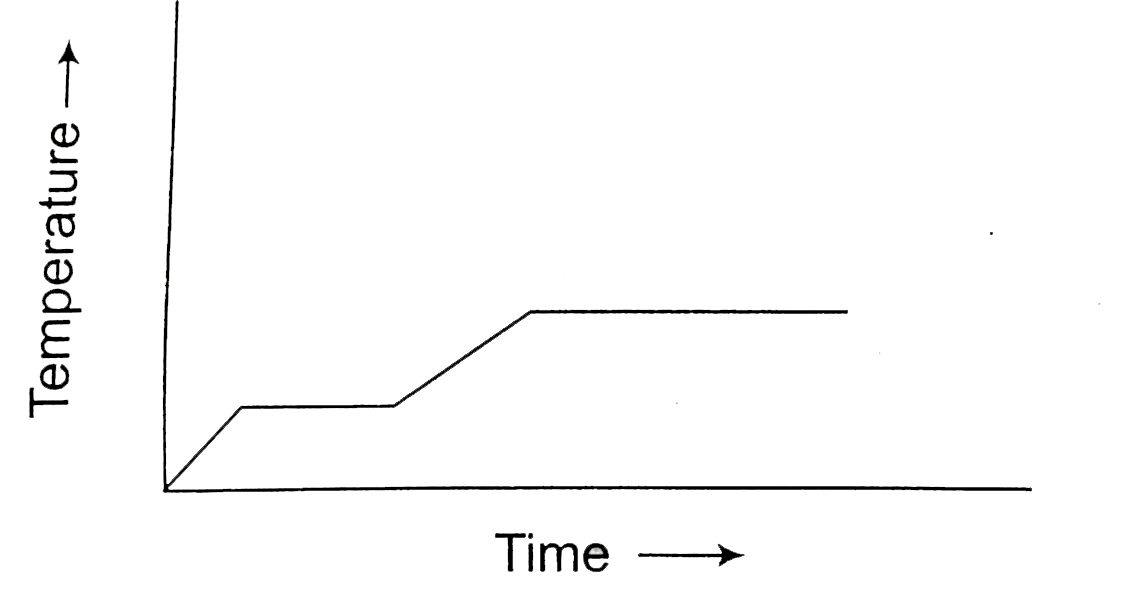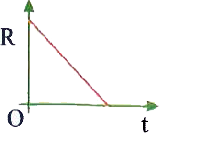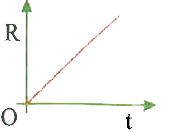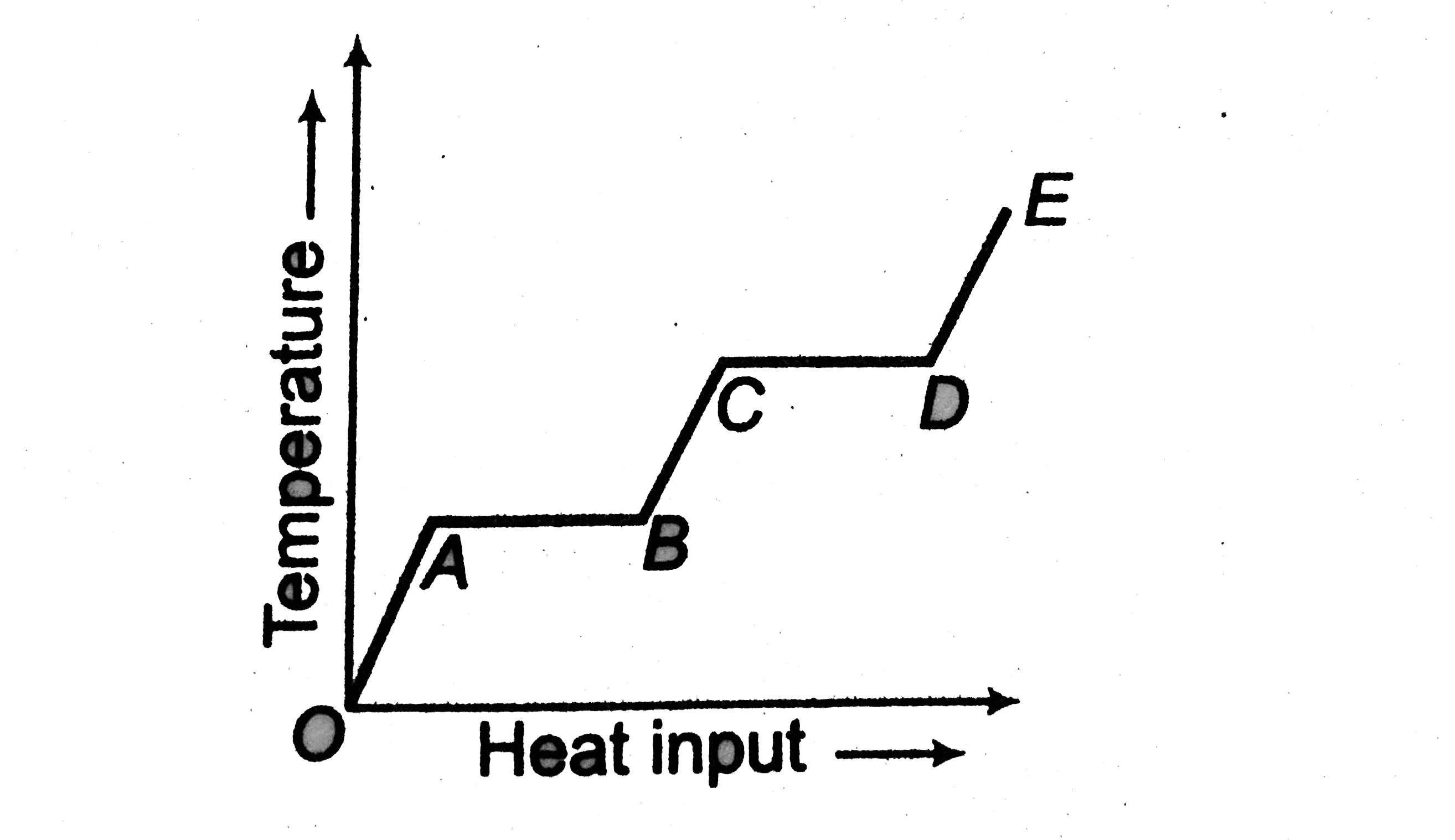Heat is supplied to a certain homogeneous sample of matter, at a uniform rate. Its temperature is plotted against time, as shown. Which of the following conclusion can be drawn? Slope of OA is greater than slope of BC

Its specific heat capacity is greater in the solid state than in the liquid state
Its specific heat capacity is greater in the liquid state than in the solid state
Its latent heat of vaporisation is greater than its latent heat of fusion
Its latent heat of vaporisation is smaller than its latent heat of fusion
The correct Answer is:B, C
dQ=mCdT
orHdt=mCdT
∴C=(Hm)1(dT/dt)
As dTdt of BC is smaller , so Cliquid >Csolid
Q1=H(Δt1)andQ2>Q1

Topper's Solved these Questions
- BOOK - MTG-WBJEECHAPTER - HEAT AND THERMAL PHYSICSEXERCISE - WB JEE PREVIOUS YEARS QUESTIONS15videos
HEAT AND THERMAL PHYSICS
- BOOK - MTG-WBJEECHAPTER - HEAT AND THERMAL PHYSICSEXERCISE - WB JEE WORKOUT ( CATEGORY 2: SINGLE OPTION CORRECT TYPE )14videos
HEAT AND THERMAL PHYSICS
- BOOK - MTG-WBJEECHAPTER - GRAVITATIONEXERCISE - WB JEE Previous Years Questions (CATEGORY 1: Single Option Correct Type7videos
GRAVITATION
- BOOK - MTG-WBJEECHAPTER - KINEMATICS EXERCISE - WB JEE Previous Years Questions (CATEGORY 3 : One or More than One Option Correct Type (2 Marks) )1videos
KINEMATICS
Similar Questions
Heat is supplied to a certain homogeneous sample of amtter, at a uniform rate. Its temperature is plotted against time, as shown in the figure below. Which of the following conclusions can be drawn?
 View Solution
View Solution
Heat is supplied to a certain homogeneous sample of matter, at a uniform rate. Its temperature is plotted against time, as shown Which of the following conclusions can be drawn?
(i) Its specific heat capacity is greater in the solid state than the liquid state.
(ii) Its specific heat capacity is greater in the liquid state than in the solid state.
(iii) Its latent heat of vaporization is greater than its latent heat of fusion.
(iv) Its latent heat of vaporization is smaller than its latent heat of fusionView Solution
Knowledge Check
- Question 1 - Select One
Heat is supplied to a certain homogeneous sample of amtter, at a uniform rate. Its temperature is plotted against time, as shown in the figure below. Which of the following conclusions can be drawn?
 AIts specific heat capacity is greater in the solid state than in the liquid state.BIts specific heat capacity is smaller in the solid state than in the liquid state.CIts latent heat of vaporisation is greater than its latent heat of fusion.DIts latent heat of vaporisation is smaller than its latent heat of fusion.
AIts specific heat capacity is greater in the solid state than in the liquid state.BIts specific heat capacity is smaller in the solid state than in the liquid state.CIts latent heat of vaporisation is greater than its latent heat of fusion.DIts latent heat of vaporisation is smaller than its latent heat of fusion. - Question 2 - Select One

Heat is supplied to a certain homogeneous sample of matter, at a uniform rate. Its temperature is plotted against time, as shown Which of the following conclusions can be drawn?
(i) Its specific heat capacity is greater in the solid state than the liquid state.
(ii) Its specific heat capacity is greater in the liquid state than in the solid state.
(iii) Its latent heat of vaporization is greater than its latent heat of fusion.
(iv) Its latent heat of vaporization is smaller than its latent heat of fusionA(i),(iii)B(ii),(iii)C(iii),(iv)D(i),(iv) - Question 3 - Select One
The rate of decay (R) of nuclei in a radioactive sample is plotted against time (t). Which of the following best represents the resulting curve ?
A B
B C
C D
D
The activity of a certain radioactive sample is plotted against time in graph. If the initial slope of the curve is m, then find the slope of the curve at point P ?
 View Solution
View SolutionHeat is supplied to a certain amount of ice at a constant rate for 9 min. For' the first 1 min, the temperature rises uniformly with time, Then the temperature remains constant for the next 5 min and after that again temperature rises at uniform rate for last 3min. If the ratio of magnitude of final temperature to initial temperature is P∘C, then find the 'value of 4P. (Given: S_ (ice )=0.5 (cal) (g)^(-1)/overset(o) \ C^(-1), L_(f)=80 (cal g).
View SolutionA solid material is supplied heat at a constant rate. The temperature of material is changing with heat input as shown in the figure. What does the slope of DE represent ?
 View Solution
View SolutionThe rate of decay (R) of nuclei in a radioactive sample is plotted against time (t). Which of the following best represents the resulting curve ?
View SolutionA solid material is supplied heat at a constant rate. The temperature of material is changing with heat input as shown in the figure. What does the slope of DE represent ?
 View Solution
View Solution
